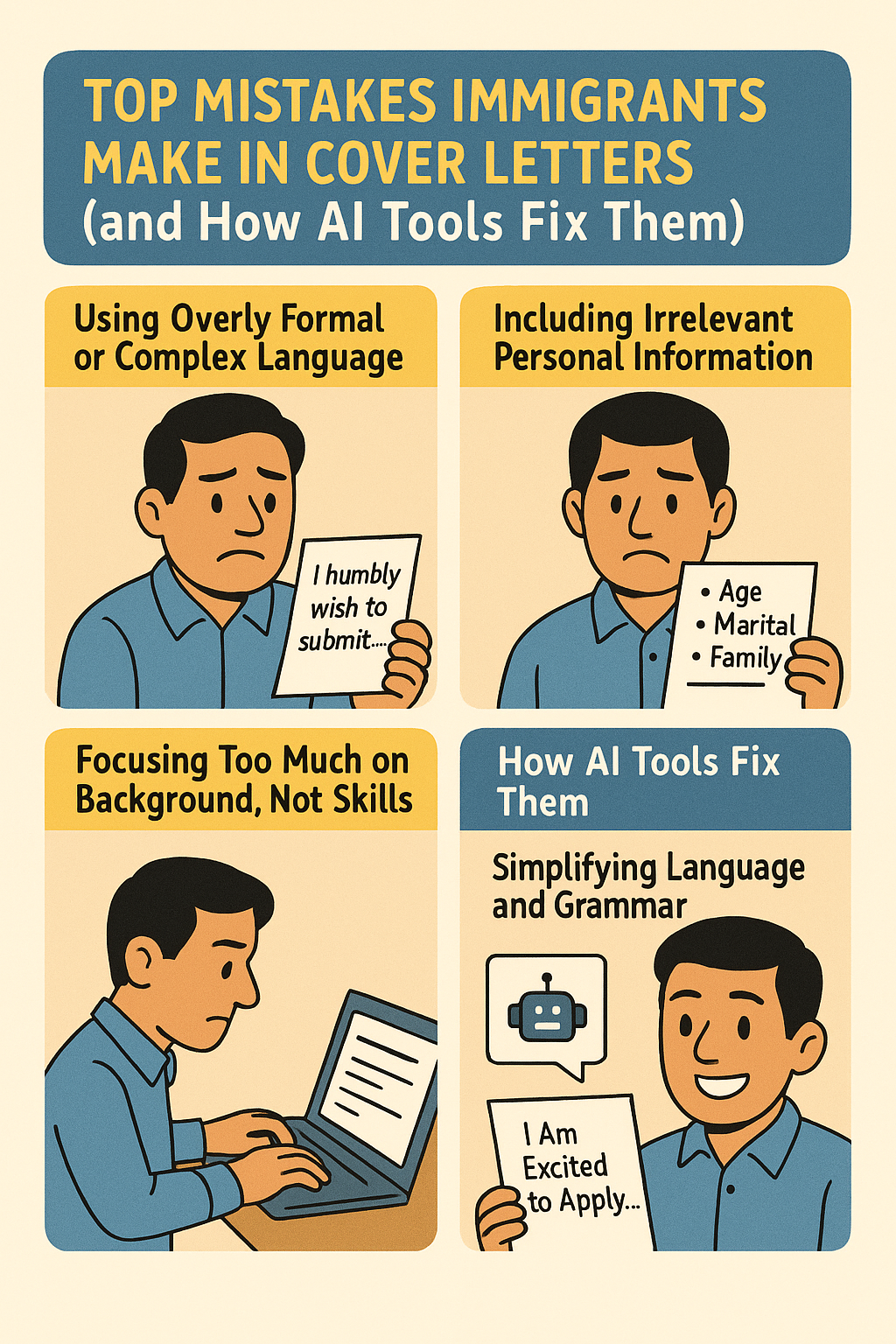A strong cover letter is often the difference between getting noticed or being ignored in Canada’s competitive job market. For immigrants, however, language barriers and cultural differences make this document especially challenging. Many newcomers unknowingly repeat common errors that hurt their chances. Fortunately, modern AI tools can help avoid these pitfalls and create cover letters that resonate with Canadian employers.
Top Mistakes Immigrants Make in Cover Letters
Using Overly Formal or Complex Language
Stiff, formal English is the result of many immigrants translating straight from their native tongue. Clarity and succinct words are preferred by employers over complex terminology. It is more effective to say “I am excited to apply for this role” rather than “I humbly wish to submit my candidacy.”
Including Irrelevant Personal Information
Age, marital status, and family history are frequently included in applications in some cultures. This is unneeded and even discouraged in Canada. Keep personal information private and concentrate on your abilities and accomplishments.
Focusing Too Much on Background, Not Skills
Immigrants frequently devote several paragraphs to discussing their educational background or voyage to Canada. Although motivating, companies want to know how your abilities fit the position. Instead, emphasize transferable qualities like technical proficiency, teamwork, or leadership.
Repeating the Resume Instead of Adding Value
Your CV should not be repeated in a cover letter. Rather, it ought to give background information, why you are interested in the position, and what makes you special.
Neglecting ATS Optimization
Applicant Tracking Systems (ATS) are used by many Canadian businesses to scan cover letters. If you don’t include keywords from the job posting, people could never see your application.
How AI Tools Fix These Mistakes
Many of these errors can be corrected by contemporary AI methods, which will help immigrants stand out.
Rezi, for instance, is a well-liked option for cover letters and resumes; see our comprehensive analysis in [Rezi Review 2025: Is This the Best AI Resume Builder?]
Simplifying Language and Grammar
Artificial intelligence (AI) tools such as Grammarly, QuillBot, or ChatGPT streamline text, fix grammar, and modify tone to conform to Canadian workplace norms.
Tailoring Content to Job Descriptions
In order to improve ATS performance, AI-powered generators like Zety and Resume.io produce customized cover letters that extract keywords straight from job advertisements.
Highlighting Transferable Skills Automatically
Artificial intelligence (AI) tools can evaluate your resume and recommend transferable abilities to highlight. For example, project coordination experience can be reframed as leadership in volunteer work.
Ensuring ATS-Friendly Formatting
The majority of AI cover letter generators offer neat, polished designs that complement ATS systems and Canadian company standards.
Tips for Immigrants to Write Stronger Cover Letters
- Use job-specific vocabulary : Pay attention to industry jargon that employers are familiar with.
- Leverage settlement services : Many Canadian immigrant agencies offer free cover letter review workshops.
- Combine AI with human input : Start with AI for structure, then ask a mentor or career coach to polish for cultural nuance.
For more basics, see Indeed’s guide on cover letter writing.
Conclusion
The Top Mistakes Immigrants Make in Cover Letters are surprisingly common: overly formal wording, unrelated information, and inadequate ATS optimization.. However, these problems are simple to resolve using today’s AI-powered solutions. Newcomers can write cover letters that showcase their talents and make an impression on the Canadian job market by fusing technology and cultural sensitivity.
